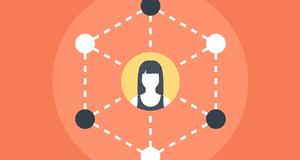From Elon Journal of Undergraduate Research in Communications VOL. 3 NO. 2Facebook Pages and Benefits to BrandsV. ResultsAmong a total of 104 individuals who completed the online survey, 84% (87 respondents) were female, and 16% (17 respondents) were male. Also 94% of the participants were between the ages of 18 and 22, as shown in Table 1.
When asked how many fan pages they like on Facebook, the largest number of 24 respondents (23%) indicated they like either 3-5 pages or 21 pages or more, as shown in Figure 1. Figure 1. Number of fan pages respondents like on Facebook
Participants were then asked about what types of Facebook fan pages they like and were given the opportunity to select all that applied. Books/movies were most liked, followed by celebrities, fashion brands and others, as shown in Figure 2. Figure 2. Types of fan pages that respondents like on Facebook.
Some brand fan pages that multiple respondents like include Lilly Pulitzer, Tory Burch, YoZone Frozen Yogurt, Buffalo Wild Wings, Disney, TOMS, Barnes and Noble, Habitat for Humanity, Best Buddies, JCrew, Kate Spade, and Starbucks. When asked how often they visit the pages they like, one participant (1%) stated that they visit the pages multiple times a day, 8 participants (8%) visit a couple of times a week, 6 participants (6%) visit once a week, 16 participants (15%) visit every couple of weeks, 25 participants (24%) visit monthly, and 28 respondents (27%) never visit the pages. Table 2 indicates how much time the respondents spend on a fan page when they visit.
Respondents were asked to indicate how they interact with Facebook fan pages. Options given were to "watch videos," "view photos," "write on the page's wall," "comment (on posts, photos, videos)," "participate in contests or sweepstakes," and "I do not interact with fan pages." The responses are displayed in Figure 3. Figure 3. How survey participants interact with fan page features.
Respondents were then asked how often they interact with the features on fan pages that they like. The responses are displayed in Figure 4. Figure 4. How often participants interact with fan page features.
Participants were asked to rate the extent to which they agree with three statements regarding brand loyalty, connection to fan pages they "like" and purchase intention on a scale of one to five, with one being strongly disagree and five being strongly agree. Brand loyalty was defined for participants as a preference of one brand over all others and will only purchase other alternative brands as a last resort. When asked to rate how they feel about the statement, "I consider myself a brand loyal user to brands I 'like' on Facebook," on a scale of one being strongly disagree to five being strongly agree, 26% of respondents strongly disagreed, 27% disagreed, 20% were neutral, 22% agreed, and 5% strongly agreed. Participants were then asked to rate the level of their agreement with the statement, "I feel connectedto the fan pages that I 'like. '" The result was that 27% strongly disagreed, 25% disagreed, 30% remained neutral, 16% agreed, only 2% strongly agreed. Participants were also asked to rate the level of their agreement with the statement, "Being a member of a Facebook fan page makes me more likely to purchase that brand," on a scale of one to five, with one being strongly disagree and five being strongly agree. Among the participants, 26% said they strongly disagree, 28% disagree, 20% remained neutral, 22% agreed, 4% strongly agreed. The distribution of responses to the three statements can be seen in Figure 5. Figure 5. The distribution of responses to the three statements.
Survey participants were asked how likely they were to purchase a product or service promoted by a Facebook fan page that they like on a scale of one to five, with one being never and five being very likely. The percentage of respondents and their answers are displayed in Figure 6. Figure 6. Likeliness of purchasing a product or service promoted by a fan page respondent's like.
Eighteen (18%) respondents said they would "never" purchase the product or service promoted by a Facebook fan page that they like, followed by "not likely" by 21% of respondents; "ambivalent" by 37% "likely" by 21%, and "very likely" by 3%. Finally, participants were asked to select all responses that indicated their motivation behind likinga brand's Facebook fan page. The options were "sweepstakes or contest," "monetary (coupon or free offer) games/entertainment," "to post positive or negative comments," "to interact with other brand users," "just love the brand/brand loyal user," or "other." Just love the brand/brand loyal user was chosen by the largest number of respondents, followed by sweepstakes or contest, monetary rewards, etc. as shown in Figure 7. Figure 7. Motivations behind liking a brand's Facebook fan page. Suggested Reading from Inquiries Journal
Inquiries Journal provides undergraduate and graduate students around the world a platform for the wide dissemination of academic work over a range of core disciplines. Representing the work of students from hundreds of institutions around the globe, Inquiries Journal's large database of academic articles is completely free. Learn more | Blog | Submit Latest in Business & Communications |




























